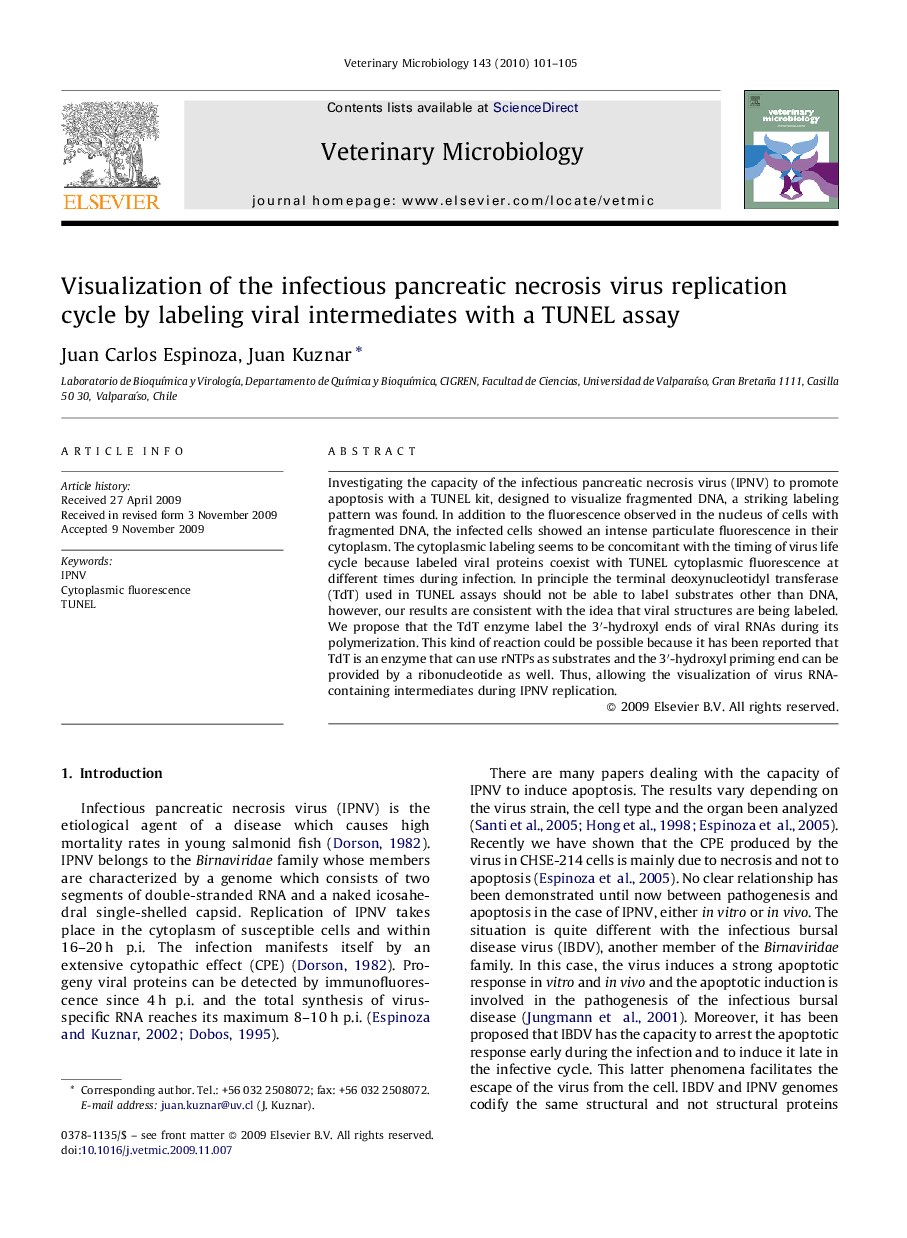| Article ID | Journal | Published Year | Pages | File Type |
|---|---|---|---|---|
| 2468121 | Veterinary Microbiology | 2010 | 5 Pages |
Investigating the capacity of the infectious pancreatic necrosis virus (IPNV) to promote apoptosis with a TUNEL kit, designed to visualize fragmented DNA, a striking labeling pattern was found. In addition to the fluorescence observed in the nucleus of cells with fragmented DNA, the infected cells showed an intense particulate fluorescence in their cytoplasm. The cytoplasmic labeling seems to be concomitant with the timing of virus life cycle because labeled viral proteins coexist with TUNEL cytoplasmic fluorescence at different times during infection. In principle the terminal deoxynucleotidyl transferase (TdT) used in TUNEL assays should not be able to label substrates other than DNA, however, our results are consistent with the idea that viral structures are being labeled. We propose that the TdT enzyme label the 3′-hydroxyl ends of viral RNAs during its polymerization. This kind of reaction could be possible because it has been reported that TdT is an enzyme that can use rNTPs as substrates and the 3′-hydroxyl priming end can be provided by a ribonucleotide as well. Thus, allowing the visualization of virus RNA-containing intermediates during IPNV replication.
